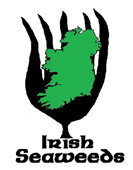Seaweed and Algal Q and A
To what kingdom(s) do algae belong?
Algae are not a single taxonomic entity. Molecular phylogeny (gene sequencing) and other characters show they belong to four kingdoms: Kingdom Plantae (e.g. chlorophytes and rhodophytes - green and red algae), the Kingdom Chromista (e.g. phaeophytes - brown algae - dinoflagellates, and diatoms), the Kingdom Protista (e.g. Euglenophytes), and the Kingdom Bacteria (cyanophytes).
To what kingdom(s) to seaweeds belong?
Seaweeds are not a single taxnomic entity. Molecular phylogeny (gene sequencing) and other characters show they belong to three kingdoms: Kingdom Plantae (chlorophytes and rhodophytes), the Kingdom Chromista (phaeophytes), and the Kingdom Bacteria (cyanophytes).
Are algae plants?
Those that belong to the Kingdom Plantae are, by defitinition, plants; the others, strictly speaking, are not.
Are algae "protists" or "protoctists"
Neither of these terms are applicable to all algae in a phylogenetic sense. Mostly used in general textbooks without much thought.
How many species of algae are there?
Over 50,000 have been described to date. More information from AlgaeBase.
How many species of seaweeds are there?
About 12,000 have been described to date (over 7,000 red algae; more than 2,000 phaeophytes; some 1,500 greens; and perhaps 1,500 blue-greens). The diatoms are probably the largest group of algae with well over 25,000 species described to date. More information from AlgaeBase.
How many species of freshwater and terrestrial algae are there?
There are about 35,000 species, but many more remain to be included in AlgaeBase. By far the largest diversity is in diatoms, desmids, green and blue-green algae. Red and brown algae are particularly poorly represented.
How long have algae been around?
As algae mostly have soft body parts, the fossil record is generally poor. An alga stongly resembling the red alga Bangia (a seaweed), Bangiomorpha pubescens, has been found in rocks 1,200 million years old. It is also the first known sexually-reproducing organism.





